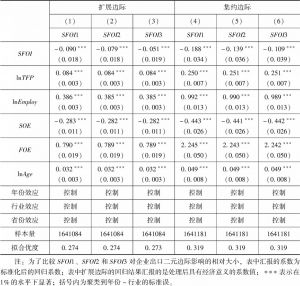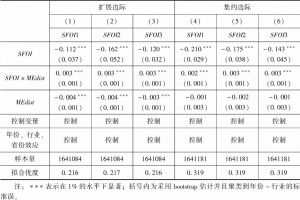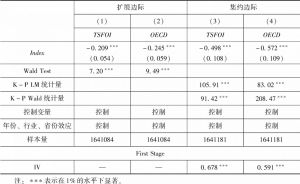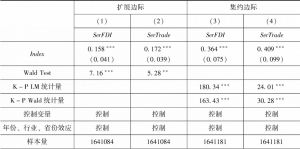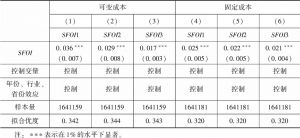章节
服务业开放、管理效率与企业出口
摘要
本文从服务业中间品市场开放的视角,研究了我国服务业外资参股的政策调整对下游制造企业出口的影响。首先,我们构建一个企业贸易理论框架,从理论上证明服务业中间品的开放通过成本渠道影响制造企业的出口,并且企业的管理效率对服务业的作用发挥存在显著影响。接着,本文基于《中华人民共和国服务贸易具体承诺减让表》和国家发改委颁布“关于外资参股服务业”的相关文件,通过量化外资参股的政策变化,刻画出1997~2007年我国服务业的外资开放和限制变化程度,并进一步通过服务业中间品投入产出比例匹配的企业信息,检验了对出口的影响。结果和理论基本吻合。首先,服务业允许外资参股的政策显著提高了下游制造业的出口倾向和出口额;其次,服务业开放对企业出口的积极作用在管理效率高的企业表现更为显著;最后,在考虑内生性以及使用替换变量等检验中,我们的结果仍然稳健。因此,我们的分析指出,服务中间品市场的开放改革,可以进一步优化我国出口市场结构,提高出口绩效。
检索正文关键字
章节目录
- 一 引言
-
二 理论模型与研究假说
- (一)消费者与偏好
- (二)制造业企业生产与服务投入
- (三)服务业开放与企业出口行为
-
三 计量模型设定及数据说明
- (一)数据说明
- 1.制造业企业数据
- 2.服务业开放指标构建
- (二)计量模型设定
- (一)数据说明
-
四 回归结果和分析
- (一)基准回归
- (二)服务业开放、管理效率与企业出口
- (三)稳健性检验
- 1.服务业开放再度量
- 2.使用以往服务业开放指标的检验
- 3.对回归样本选择的稳健
- 4.Heckman 两步法检验
- (四)影响机制的检验
- 五 结论与建议
相关文献
查看更多>>>


